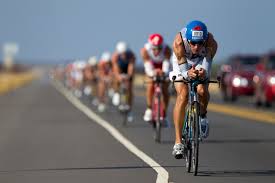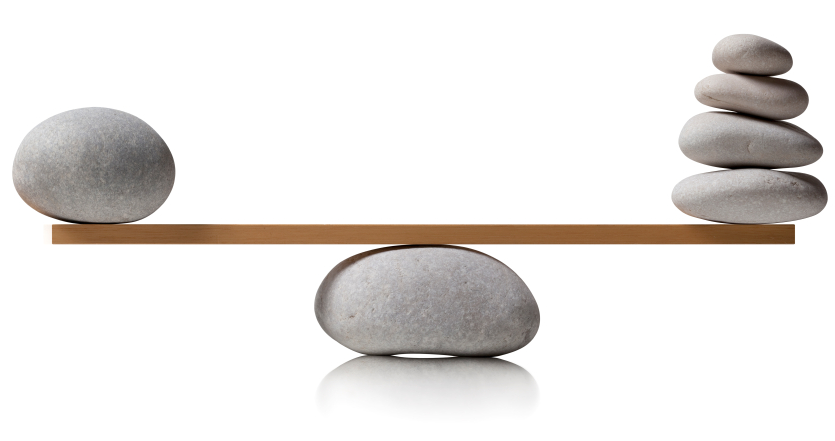A couple thousand athletes have poured their hearts and souls into preparing for this singular day in October. Many will finish. Some will race strongly from start to finish. A bigger percentage will start by racing strongly and fall apart at some point in the race, finishing but doing so with infamous Queen K Death March. Still others will not finish at all. Of those who end up not racing up to par or DNFing, some will experience bad luck such as a mechanical on the bike, others will simply be having a bad day, but the vast majority will employ questionable race-day tactics which lead to poor performance.
From start to finish, the Kona Ironman course requires great strength and stamina. It throws heat, humidity, wind, exposure, desolation and some mysticism at every athlete. It takes a strong constitution to emerge victorious (however you define “victory”). Here are some tips to help you make better sense of how to approach the course, leg by leg. While I cannot guarantee you will have a great performance just by reading and following this advice, what I can tell you is that hitting race day with a thoughtful, executable game plan will absolutely raise the odds that you will have a positive experience, making all of the sacrifices to get to the start line worth it.
The Swim
The 2.4-mile swim is effectively an out-and-back affair in relatively calm water. It is known in Kona that “a mile out is a mile deep”, but the swim hugs the coastline and, thus, never gets more than 50-70 feet deep. Given that the first leg of the swim is 1.2 miles, it is not critical to pick the shortest, straightest line to the turnaround buoys. By starting closer in to the pier, you open yourself up to being smack in the middle of the washing machine. The last place you want to be for 1-2 hours of swimming is in the middle of the churn. You will waste energy, get hit and kicked and grabbed, and may even get your goggles knocked off.
Instead, start far out to the side of the pier. You will start with cleaner water, swim faster and be able to choose when you want to enter the fray. Aim for the turnaround buoys; you will only be swimming an inconsequential number of meters more than if you start in at the pier. Typically, after 400-500 meters, the pecking order has been figured out. You can breathe to your right, and when you find a small group of swimmers to engage, start veering over deliberately to the small group and settle in behind a nice set of feet. Start saving energy, bring your HR down and enjoy the ride!
Which brings me to the next point. Save your energy on the swim! I covered the swim leg in 48-49 minutes when I raced Kona. When my goal was to be first out of the water, I burned more energy and actually swam slower than when I saved energy by hopping on feet and conserving. I went from feeling like I raced 2.4 miles to instead feeling like I had just warmed up for three-quarters of an hour. Big difference. The extra energy expenditure during the swim will not translate into a materially faster swim time nor a faster race. That’s energy you’ll never get back and you’re only about 10% into the race. Better to save that energy for the bike and run legs.
Transition And In Town
Remember this is the Ironman World Championships! The vast majority of the couple thousand athletes will exit the water within about a 30-45-minute window of time. This means that there will be a lot of cyclists around you when you do finally head out on to the road. Couple this with the exhilaration of exiting the water surrounded by the frenetic crowd. Your HR will be highest at this point in the race because after being prone for so long and then standing up, your HR and blood pressure will spike in order to keep blood in your head so you don’t faint. So, fight-or-flight is kicking in here, too. Everything is revving up as racers make a circuit of town, then head out on to the Queen K for the long slog to the turnaround at Hawi.
Stay in control here. Drink a little big as you jog (don’t run) to your bike. Get the saltwater off you, especially in the nooks and crannies of the body where a little salt rub will result in raw skin during 112 miles of biking. Better to spend a few extra seconds here to avoid slowing down minutes due to acute discomfort. Get in touch with your body. Fight the franticness of the moment. Let your body settle down naturally in the first 15-20 minutes before you start hydrating and fueling, and before you start worrying about you HR and wattage. Things will be in a state of flux at first, and the more you try to force things, the more risk there will be of rebellion by your body – maybe not immediately, but certainly at some point. Remember, you are going to be racing for many hours, so avoid getting hung up on accounting for every second. Don’t be lazy, but also avoid hammering yourself into a DNF.
Airport To Waikoloa
The bike course is rolling hills and deceptively challenging. By the end of the 112 miles, you will have gained somewhere between 2,500-3,000ft of elevation. Not killer, but not flat, either. Winds will be light typically and may remain so. On the other hand, it might be like it was in 2014 when athletes were hit with such a killer headwind that they were biking slower than 10mph on flat stretches of road. Time tacked on due to a headwind will never be made up when you switch direction and gain a tailwind. Be OK with this inevitability. More often than not, the wind plays a major factor in Kona. And it can be demoralizing.
Once past the airport, the next major landmark is Waikaloa and the luxury resorts out that way. And, once past Hapuna Beach, the Queen K Highway officially ends.
By now you should be well into your hydration and fueling strategy. Keep in mind that you could neither hydrate nor fuel during the swim, so be mindful of this on the bike and gradually work extra liquids into your routine.
Kawaihae to Hawi
This is really where the challenge begins as racers leave the lava fields for the long climb to Hawi. The winds typically begin to pick up here. Be prepared for sudden wind gusts. The last climb into Hawi is often straight into the wind. Avoid grinding your gears at a low RPM and rocking all over your bike. Stay relaxed, up your cadence just a little bit and keep your head down. Also remember the mantra “pee by Hawi.” If you hit the turnaround and you still don’t feel like the need for a pit stop, you are under-hydrated and have some serious catching up to do.
As you head back down from Hawi, you will get rewarded with a tailwind for awhile. Enjoy it! Smile, take a breather, let the wind do some work for you and let your HR drop. If crosswinds hit you, avoid panicking. The best thing you can do is stay in the aero tuck, grab the bars just a little tighter and steer with the elbows.
Kawaihae Back To The Airport
The mile markers creep by here. You’ll keep your head down for what feels like 15 minutes, look up and see the very next mile marker. Maddening, especially as fatigue sets in and all you can think about is getting off your bike. Be ready for challenging sections of headwinds, false flats and gusts that can reach 30–60mph. Use this long stretch to move around in the saddle and also in your riding position. It is unrealistic to think you will stay in the aero tuck for 112 miles, so don’t even try. Doing so will only cause certain muscles to get overworked and create undue fatigue. And, you will ride slower overall.
Energy Lab To T2
This last segment of the bike is a good chance to take a breather, and consume extra fluids and calories compared to the rest of the bike leg. Increase your cadence a little bit, keep your feet light on the pedals, and allow your HR to drop a handful of beats, if not more. Collect yourself as you prepare to dismount and get focused on the run.
The Run – Heading out to the NEL
The opening miles of the run are euphoric. In some respects, you feel like you’re almost done. Two legs down, one to go! In others, the enormity of running a marathon is still in front of you. Yikes! There is a freshness to the legs and body which conflicts with how fatigued you feel as you dismount the bike. Your first thought is probably, “I can do this!” It is imperative that you hold back the first hour or so of the run. Allow the energy of the crowd to carry you along and make those opening miles fly by, but avoid allowing that awesome energy to allow you to fly out of T2 at a pace you have no hope of sustaining for 26.2 miles. The opening third of the marathon is easy, relatively speaking. Everyone is a hero for the first 8-10 miles. It’s what happens after about mile 13-16 that defines the race.
The NEL (Natural Energy Lab) is a 4-mile out-n-back stretch that is a lonely, sometimes heartbreaking, soul-searing stretch of road. If you’re already on the downslide, this is the absolute worst part of the course. Legend has it that the NEL is a good 10-15 degrees warmer than the open Queen K Highway. Having raced Kona, I would not doubt it for a second.
As the body fatigues, it will be more challenging to consume fluids and sugary carbs. Stick to stuff that your mind tells you is inviting and consider walking through each aid station. This will allow for the HR to drop, allow you take in more fluids and collect yourself for the next manageable stretch of the race before the next aid station. These mini-breaks will pay big dividends later on.
The NEL to the Finish
You’re nearly there! Give yourself a well-earned and well-deserved pep talk. Dig deep and ride the energy of other athletes toward the finish. Find a comrade-in-arms, strike up a conversation and share the burden of the remainder of the race. Remember, you are all in this together!
At some point, there will be a trigger inside you that wants to be pulled. You will start getting the urge to “kick”. It could be at the very end for the finishing straight, or it could be several miles out from the finish. For me, it came with around 5k to go. Honor it. Your body knows what energy stores you have left and what you don’t have left. If it’s telling you to “GO!” then go. Be careful and metered. Test the waters and if pressing your effort feels good, then embrace it and go for broke! Keep up the hydration and fueling, as this stretch is still a long way from the actual finish.
When you cross the line, bask in the glory of your accomplishment. Regardless of whether or not you hit your goals, you just realized a great achievement! Honor this. Embrace it. Soak it all in. The crowds gathered at the end don’t care if you won or come in dead last. They are there to honor you.
Good luck!!
Happy Training,
Coach Nate



 RSS Feed
RSS Feed